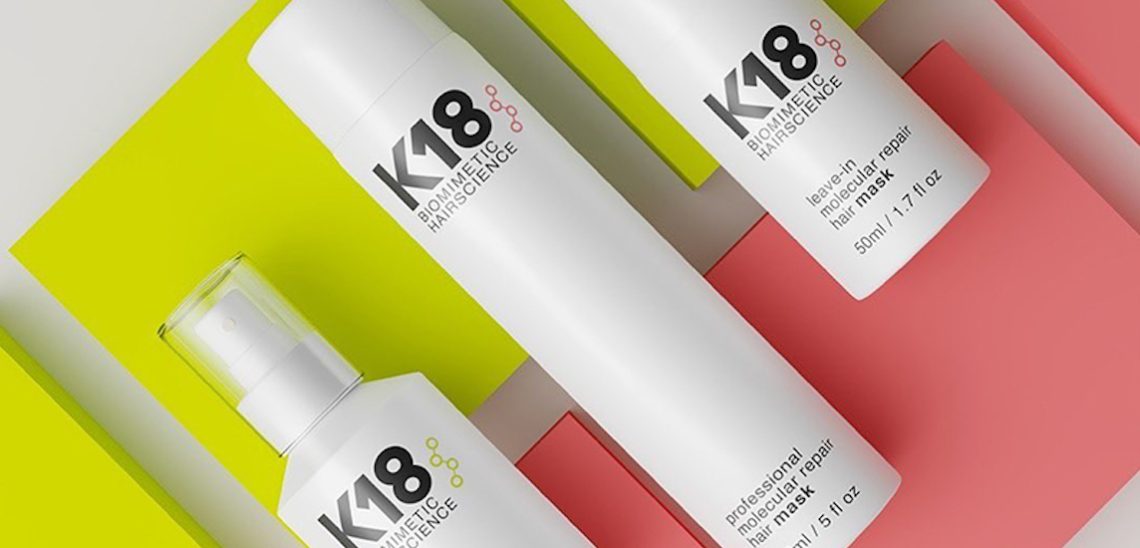First Physical Pitti Filati Textile Fair in a Year Reassures, Shines – WWD
MILAN — For the long-awaited return to the IRL format, textile trade show Pitti Filati debuted a new show space inside the Stazione Leopolda former railway plant, welcoming some 78 exhibitors, down from 136 in January last year.
These were automatically featured on the Pitti Connect platform, which included seven other companies that couldn’t be physically present in Florence to unveil their fall 2022 yarn and textile collections.
The backbone of the Italian fashion supply chain, the trade show’s exhibitors described the return to the physical experience as relieving in that there’s nothing that can replace the touch-and-feel experience when it comes to choosing fibers and textiles.
“The digital component is an effective way to communicate and promote the company but has less business potential,” offered Alessandro Bastagli, chief executive officer of Lineapiù, which is based in the outskirts of Florence.
“Zoom meeting helped us stay in touch, but selling our products requires a physical and tactile evaluation of them and immediate feedback,” echoed Silvio Botto Poala, CEO of the Botto Giuseppe yarn and textile company.
Tollegno 1900 CEO Lincoln Germanetti agreed: “Our sector is rooted in tactility. To be able to see and touch the yarns is a primary part of the experience not only of buying but also of understanding the product.”

The New Royal 4.0 yarn from the Tollegno 1900 fall 2022 collection.
Courtesy of Tollegno 1900
According to spinners, the digital medium imparted more than one lesson. For instance, Filpucci president Federico Gualtieri said the company won’t completely forgo the digital element going forward. “If a yarn can’t be touched, you must use all the tools necessary to make the users understand it,” he said.
Germanetti noted that digital has helped “optimize all communication channels available and turn them into valid sales tools” as well as “to further enhance the quality of our service to answer demands of a client that has conformed to the speed of the digital world.”
The impact of the pandemic could be felt on many levels, from the notable absence of some international buyers to the preoccupation of exhibitors, which are recovering from a downturn in orders caused by protracted store closures that have left retailers with huge inventory from previous seasons.
According to data from Confindustria Moda’s research center for Sistema Moda Italia, last year total sales of the sector were down 27.2 percent to slightly more than 2 billion euros compared to 2019. Exports decreased 19.6 percent to 651 million euros, while imports dropped 29.1 percent to 594 million euros compared with the previous year. The negative performance impacted wool production, which accounts for more than 80 percent of total sales, as well as sales of cotton and linen.
“This year will undoubtedly see signs of a rebound, even though the health emergency has conditioned retail sales and promotion of new collections in the first half, so it’s hardly business as usual,” explained Fabio Campana, CEO of Lanifico dell’Olivo, who’s expecting an uptick in revenues of about 25 to 30 percent.
“The world of luxury is still moving cautiously, and this has a direct influence on our work,” confirmed Gualtieri, who expects an increase in turnover this year, yet far from pre-COVID-19 levels.
At Cariaggi, the rebound has already started. After reporting a 20 percent decrease in sales to 84.2 million euros in 2020, the Cagli, Italy-based spinner has kicked off 2021 with a positive performance and expects to close 2021 with total revenues up 5 percent.
Germanetti also sounded confident for 2021 as he forecast an “abundant recovery of the turnover lost during the closures” and expects Tollegno 1900’s sales this year to be higher than the pre-pandemic ones registered in 2019, when the company’s turnover was 158 million euros.
At the same time, the increasing challenges in the procurement of raw materials and spiking prices — due to shortage of supply, farmers’ financial struggles and increased logistics costs — are leaving spinners with more than one snafu to handle.
According to Bastagli, prices for the most luxurious materials including alpaca and super kid mohair skyrocketed by as much as 70 percent year-over-year, and even acrylic fibers are on the rise.

The City Mohair yarn from Lineapiù’s fall 2022 collection.
Courtesy of Lineapiù
“We were able to dodge the worst thanks to our expertise in buying the right amount of raw materials at the right time,” offered Campana. To be sure, competition is growing among spinners, which need to secure supply at a time when pressure to survive is growing.
Filpucci tested alternative solutions to face the issue, all the while leveraging more sustainable logistics. For its fall 2022 collection, it introduced two zero-kilometer wool yarns, sourced from sheep bred in the northern part of Italy’s Apulia region, which resulted in the Salentino and Altamura yarns.
The Italian fashion supply chain was able to reinvent itself over the course of the last decade by focusing on R&D and sustainability, dodging competition from foreign yarn-makers that could offer lower prices, and should “stay flexible and propositional despite the challenges posed by the COVID-19,” as outlined by Botto Poala, whose company is expected to close 2021 with revenues of 50 million euros, up from 48 million euros in 2020.
Along those lines, Cariaggi will continue to invest in technology, R&D and services, committing 1.5 million euros for these purposes this year to further fuel its growth.
The fall 2022 collections offered an expanded take on sustainability and struck a balance between cocooning and reassuring yarns and more fanciful iterations for brands and retailers banking on a return to a more dressed-up style in months to come.
Tollegno 1900’s sustainable offering included the new Woolcot Bio yarn blending RWS-certified extra fine merino wool and organic cotton. Incidentally, all the firm’s yarns can be produced with Responsible Wool Standard-certified wools guaranteeing the welfare of the sheep and the land they graze on.
Researching and developing sustainable solutions for over a decade, Cariaggi launched the Ethical Yarn Evolution collection, adding a dozen new options to its seasonal offer, which are traceable and dyed with natural dyeing techniques. Examples included the Fleece cashmere yarn and the Flannel blend of wool and cashmere.
“In these first months of 2021, we have noticed an increased interest from our customers in the sustainable approach of the company in all its aspects…which we have made a fundamental asset when we started this journey already back in 2006,” said the company’s board member and director of sustainability Cristiana Cariaggi.
Gualtieri shares the same mission. This year, 80 percent of the Filpucci collection was made of certified materials, including the JFK yarn made of 100 percent recycled wool and the Free Time blend of recycled wool and alpaca.
In particular, the JFK option reduces water consumption by 98 percent compared to yarns made with virgin wool and it was one of four yarns in its bestselling Woollen Selection line — boasting a recycled composition ranging from 75 percent to 95 percent — to be tested according to the Life Cycle Assessment, which certified the reduced consumption of water, energy and CO2.
“We wanted to prove with reliable and verified data the environmental benefits of using recycled materials instead of virgin ones,” said Gualtieri, underscoring the importance of providing clients with tangible measurements.
Campana said the new Lanificio dell’Olivo collection boasting 15 new yarns marks the company’s relaunch with a wide selection of certified natural fibers such as GOTS and BCI cotton, as well as RWS and RMS-approved wools and mohair, respectively. The company is also spearheading a transition for its man-made fibers to recycled versions made of PET bottles, adhering to the GRS or RCS standards.
A sustainability pioneer, Botto Giuseppe continued to bank on its Slowool range of mulesing-free wools certified according to the RWS and Cradle2Cradle standards ensuring traceability and animal welfare. Among the novelties, a superfine 100 percent merino option, as well as others blended with cashmere and silk were intended for cozy knits while the Montevideo Tec product, an easy-care merino yarn, was also machine washable.

A knitwear yarn from the Botto Giuseppe fall 2022 collection.
Davide Maestri/Courtesy of Botto Giuseppe.
In addition to the sustainable offer, spinners at the trade show continued to creatively develop yarns conveying a sense of comfort and reassurance by playing with soft and voluminous textures.
Cariaggi’s jewels in the crown in this sense were the Pepper combed yarn, a soft blend of cashmere and silk with the addition of elastane that generated a three-dimensional effect, as well as the furry Yeti option, while at Lanificio dell’Olivo earthy-toned alpaca yarns like the Beauty one were gauzed for featherlight and see-through effects.

The Pepper yarn from Cariaggi’s fall 2022 collection.
Courtesy of Cariaggi
Filpucci’s Fabulous blend of super kid mohair and wool with polyamide and elastane had a fur effect to be used for warm and enveloping cardigans and coats, while the company’s Litchi yarn had a more rustic look as organic cotton was added to wool and mohair fibers to give an irregular tactile feel. Blends of baby kid mohair and alpaca stole the spotlight in the offering of Lanificio dell’Olivo, which also introduced animalier and mélange versions.
Tollegno 1900 also addressed the cocooning feel through new, hyper light options, including the soft Nuage brushed pile yarn, while Lineapiù blended cotton and yak speckled fibers for inter-seasonal yarns aimed at outdoor garments, as well as combinations of wool and alpaca and cashmere tweeds with a rusty, vintage touch. In its City Mohair range, the company experimented with furry effects evoking Mongolian furs while rainbow-tinged dégradé mohair wools were both cocooning and flamboyant.

A yarn from Lanificio dell’Olivo fall 2022 collection.
Courtesy of Lanificio dell’Olivo
The cautious optimism for a return to normality — and therefore for social moments and dressing up occasions — also pushed the creativity toward fancier experiments.
At Cariaggi, the voluminous and lightweight Glow combed yarn was enriched with the Angelina fiber, adding a delicate touch of glitter also for daytime, while Lanificio dell’Olivo’s blends of eco-friendly cellulosic fibers and recycled polyester in wet-look rich nuances such as fuchsia and lilac had a fluid and precious feel. Lineapiù added lurex threads as well as nylon fibers to mohair yarns for a metallic and iridescent effect.
SEE ALSO:
Pitti Filati at Second Digital Test: Getting Better but Still Improvable
Sustainability Is Way Out of the Pandemic for Italian Textile Sector
Italian Textile Firms Join Forces to Weather COVID-19 Fallout





